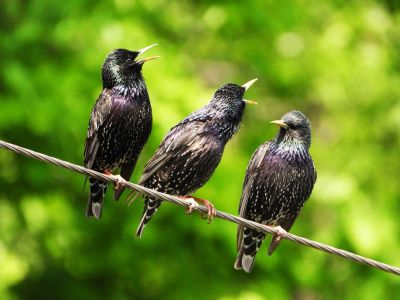Seedling bird protection can be frustrating, but you’ve got several options when it comes to protecting garden seeds from birds.
How to Protect Seedlings from Birds
Gardeners have devised a number of ways to keep birds from eating seedlings, ranging from the complicated to the impractical. Although you can pick up tools like artificial owls and bird scare items at your hardware store, these tricks lose their power over time. The only sure-fire way to keep the birds out of your seedlings is to exclude your feathery friends completely. You can start by moving any food source far away from your garden. Keep your feeder stocked as an alternative source of food for birds that may be picking at your seedlings simply because they’re hungry. Once your seedlings have reached about 8 inches (20 cm.), you can relax a little– most birds won’t bother them at this point. When birds are eating seedlings, most gardeners will end up running for the bird netting or chicken wire. These can both serve as great exclusionary materials, provided you’ve built a sturdy frame to support them. Arches made from PVC, bamboo, or soft hose can provide the support these materials need and will withstand a great deal of wind if driven deeply into the ground. Once you’ve got your material of choice stretched over the frame, pull it tightly and weight it down with rocks or secure it to the ground with landscape staples to prevent sagging. Another option that’s still under investigation is using monofilament line to deter birds from landing in your garden in the first place. Scientists aren’t sure what it is that birds find so displeasing about fishing line, but there’s solid evidence that they want nothing to do with this material. For row crops, you can suspend a single piece of fishing line above the seedlings and secure it to stakes at both ends of the row. Thickly bedded seedlings will benefit from filament run at 12 inch (31 cm.) intervals. Choose a 20 pound (9 kg.) or greater line for best results.
